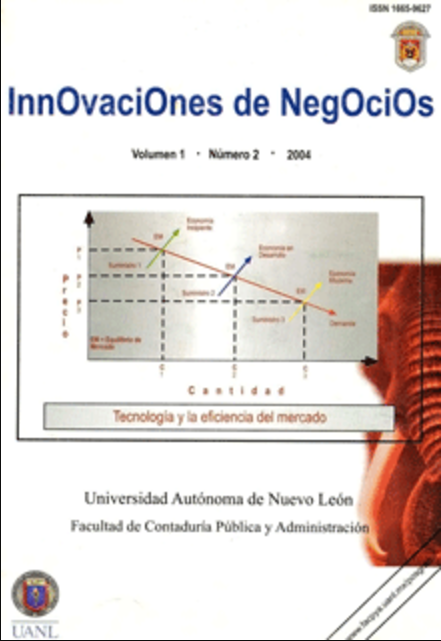SMED: The road to total flexibility
DOI:
https://doi.org/10.29105/rinn1.2-7Keywords:
Change, SMED, Total FelxibilityAbstract
This articles lays out the methodology of SMED (data change in a minute digit) as an alternative tool towards total flexibility that serves as a vital component for the competioion in the current market. Steps to conduct this tool are explained, a case study using this instrument is discussed, and this means is identified as an essential decision tool for time reduction due to model change, thereby enhancing the eficiency of the products. Today´s market is characterized by elements such as the globalization, a slow US economy and an emergent Asiatic industry. These components impact the way the companies operate worldwide, due to the facts that the companies must implement strategies such as: 1) reduction in production costs, 2) increase in quality, and 3) increase in flexibility and the response time.
Downloads
References
Cruz, J. 2004. SMED cambios rápidos de dados. Manufactura, 10: 1.
Cruz, J. 2003. Calidad con un enfoque humano. Manufactura, 12: 1.
Dilworth, B. 1989. Production and Operations Management: Manufacturing and Nonmanufacturing. 4a. Edición Random House Business Division. USA. Dirección de Internet. http://www.metalsa.com.mx. Septiembre 2004.
Mora, E. y Castillo, A. 2003. Manufactura esbelta: la experiencia Mexicana. Manufactura, 2: 1.
Nicholas, M. 1998. Competitive Manufacturing Management: Continuos Improvement Lean Production, Customer-Focused Quality. 1ª. Edición. Irvin McGraw-Hill. USA
Roldan, J. 2003. Productividad: confrontando paradigmas. Manufactura, 4: 1.
Roldan, J. 2004. SMED: ganarle tiempo al tiempo. Manufactura, 3: 1.
Shingo, S. 1989. A Study of the Toyota Production System. 1ª. Edición. Productivity Press. USA.
Downloads
Published
How to Cite
Issue
Section
License
Copyright (c) 2017 Innovaciones de Negocios

This work is licensed under a Creative Commons Attribution-NonCommercial-ShareAlike 4.0 International License.
The InnOvaciOnes de NegOciOs magazine is a free and open access electronic magazine of a scientific-academic nature and is a publication of the Autonomous University of Nuevo León, in which the authors retain their copyright and grant the magazine the exclusive right to first publication of the work. Third parties are allowed to use the published content, as long as the authorship of the work is acknowledged and the first publication in this journal is cited.
For more information, please contact the Research Secretary (FACPyA) of the Autonomous University of Nuevo León. Telephone: (81) 1340-4430. Email: revinnova@uanl.mx










